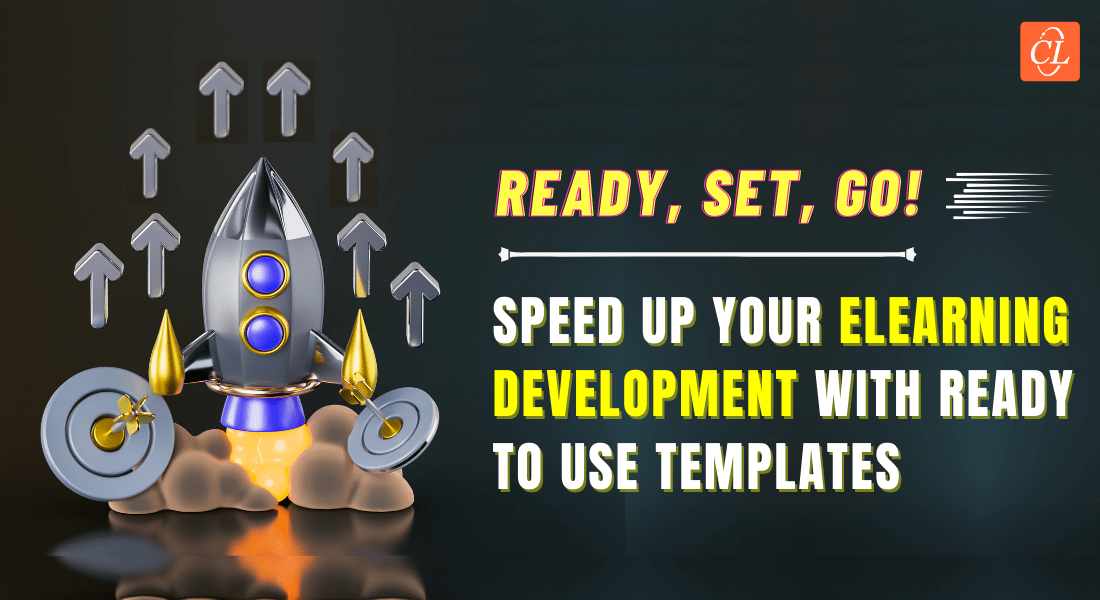Rapid eLearning: The Way to Reduce Development Time and Effort
The development time of online courses can be drastically reduced with rapid eLearning. This blog tells you how you can save precious time.

Now, time has become a very rare commodity. In the corporate world, time management is the key to success. With regard to corporate training, its success depends on the turn-around time of relevant and profitable content. This is where traditional eLearning, lags behind; and it would have hit a dead end, if it were not for rapid eLearning. Rapid eLearning, as the name suggests, is the rapid development of online courses, with the help of rapid authoring tools that drastically reduce the time taken to conceptualize, develop, and deliver eLearning courses.
Through this blog, I hope to delve into the time- and effort-saving advantages of rapid eLearning, as well as some tips to further reduce the turn-around time of courses.
Before we look at the advantages of rapid eLearning, it’s important to first understand where traditional eLearning fails (with respect to time).
Benefits of Rapid eLearning
Compared to traditional eLearning, rapid eLearning offers:
- Easy accessibility to time-saving features
- Quick turnaround time
- Quick conversion of knowledge to application
Where Traditional E-learning Fails (With Respect to Time)
We have already established the fact that, when it comes to training, time is of essence. We have also established the fact that, unless its turn-around time is cut short, eLearning will fail. The development of online training programs, using traditional eLearning, is time-consuming and laborious. The process followed goes like this:
The Process
- Raw content is analyzed
- The eLearning team is briefed about the content
- A storyboard is prepared
- The graphical user interface (GUI) and navigation are designed
- Interactions are designed
- Media is created
The Tools
- The course is developed, using complicated traditional eLearning authoring tools, that require developers to possess a considerable amount of programming knowledge
The Assessments
- Assessments are added
- The course is reviewed
The Deployment
- The course is deployed
Each of these steps is separated by time-consuming reviews by stakeholders, after which necessary iterations are made. If translations are required, one can expect a further delay by a few more weeks.
In a nutshell, with extended down time, development time, waiting, wasted, iteration, and rollout time, it takes around 3-4 months to rollout a course. It would take some more time to see results.
Rapid E-learning Development – For Rapid and Effortless Results
Rapid eLearning succeeds where traditional eLearning fails. In a nutshell, rapid eLearning development offers:
- Easy accessibility to time-saving features
- Quick turnaround time
- Quick conversion of knowledge to application
The Process
Rapid eLearning development makes use of existing content and media, and therefore does not go through the first 6 steps that make up traditional eLearning development.
The Tools
Courses are developed with sophisticated rapid authoring tools that:
- Are easy to use
- Require no prior programming skills or technical expertise
- Are ideal tools to make quick updates and improvements to the course
Furthermore, the template libraries (that are part of these tools) contain easy-to-use templates, themes, and basic interactivities that can be incorporated effortlessly, while removing the necessity to create them from scratch.
The Assessments
Basic assessment templates are available for immediate use
The Deployment
The tools can publish courses quickly, to any eLearning standard such as SCORM, and AICC. Deployment is quick and effortless.
All-in-all, rapid eLearning reduces the development time of online courses by more than 40%, developing courses in two to three weeks. For a better idea, a 60-minute course would take approximately 3 weeks to create.
Download this guide to rapid eLearning best practices for instructional designers.
Rapid E-learning Development – Best Uses
Rapid eLearning development may not be the best tool for lengthy courses that require complicated interactivities, and have a long shelf life; but it certainly is the best solution when time is a critical factor and employees must be made aware of critical, job or organization-related information, ASAP.
- Regulatory updates
- Any projects that require extensive help from SMEs
- New policies
- Product updates and releases
- Just-in-time training
- Courses that require little or no customizations
Time-saving Strategies with Rapid E-learning Development (For curricula)
While rapid eLearning development can dramatically reduce the turn-around time of a course, this method allows for more opportunity to reduce the turn-around time when creating a learning curriculum. Here are 5 time-saving tips for eLearning course developers:
Choose an authoring tool that fits your needs. Research on the tools available and understand what each tool can offer you, its pros and cons, before settling for one. If a third-party vendor will be creating your courses, ask to view course samples created with different tools.
Use standard templates across courses, so that information that will be used across all the courses can be created once, and then reused. Often, developers don’t realize that a sizeable chunk of work is repeated across courses, taking up valuable time. This can be avoided.
Develop common screens for courses of a curriculum. For example, the same graphical user interface (GUI), assessments, and interactivities can be used. As well as saving precious development time, it adds a sense of uniformity across the curriculum.
Create Reusable components that can be stored in a repository and used several times over, across the curriculum.
Learn from mistakes that have been made in projects. Before development begins, come up with a plan regarding how those mistakes can be avoided. A lot of time is wasted when a course is created, only to be scrapped and started all over again – sometimes several times over.
The time taken to develop a course (and the effort), is drastically reduced by rapid eLearning. The best part is, although the development time is cut down by almost half, the quality of the courses does not suffer.





